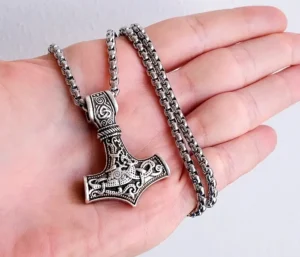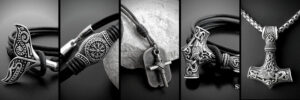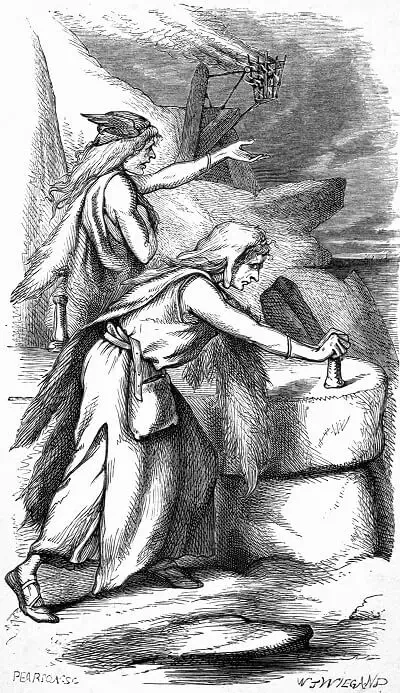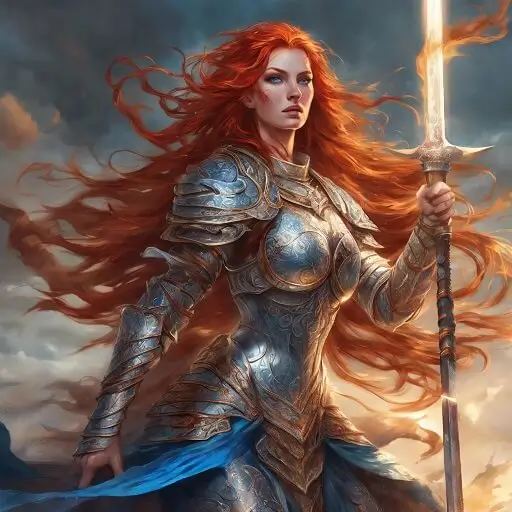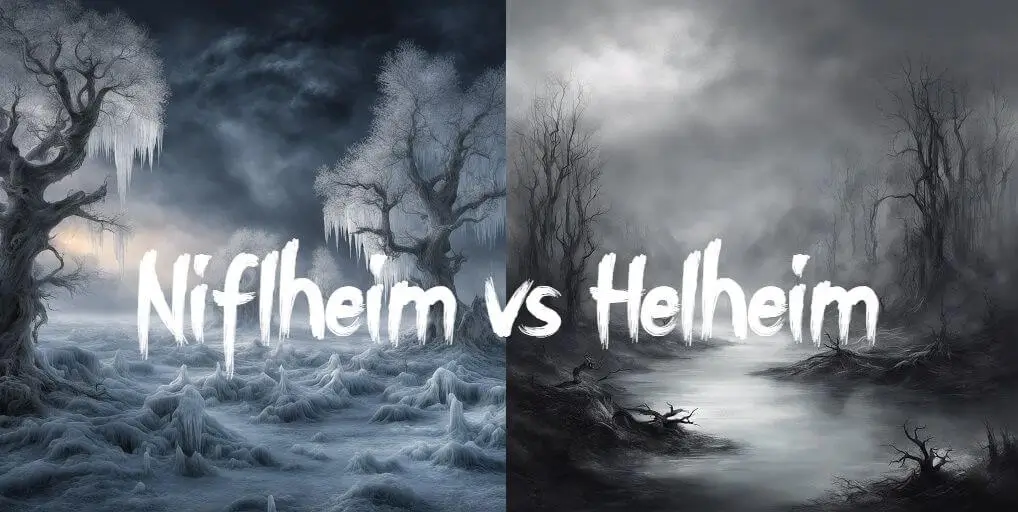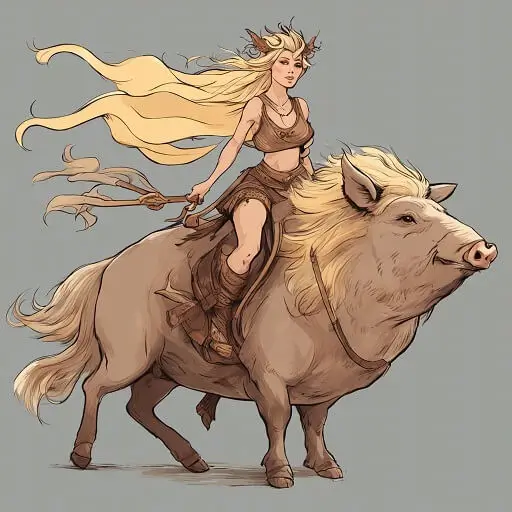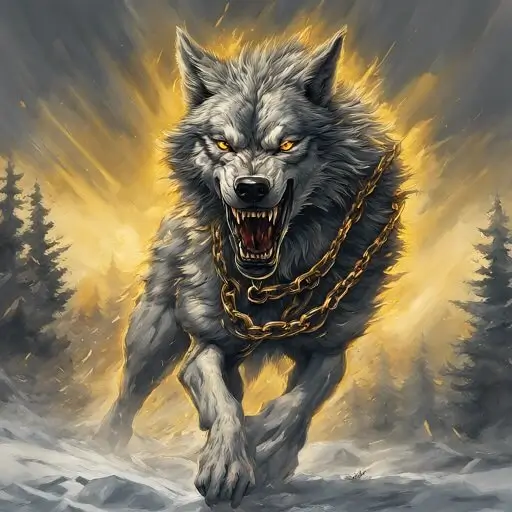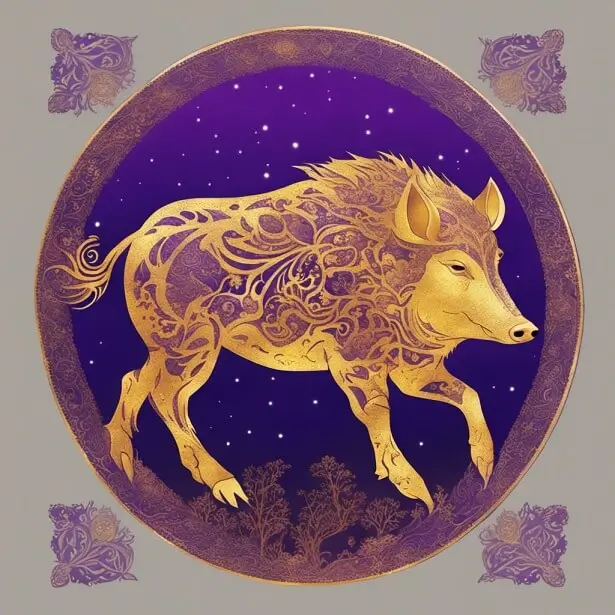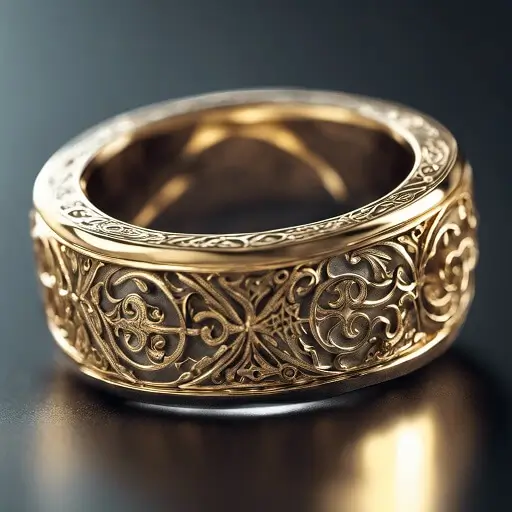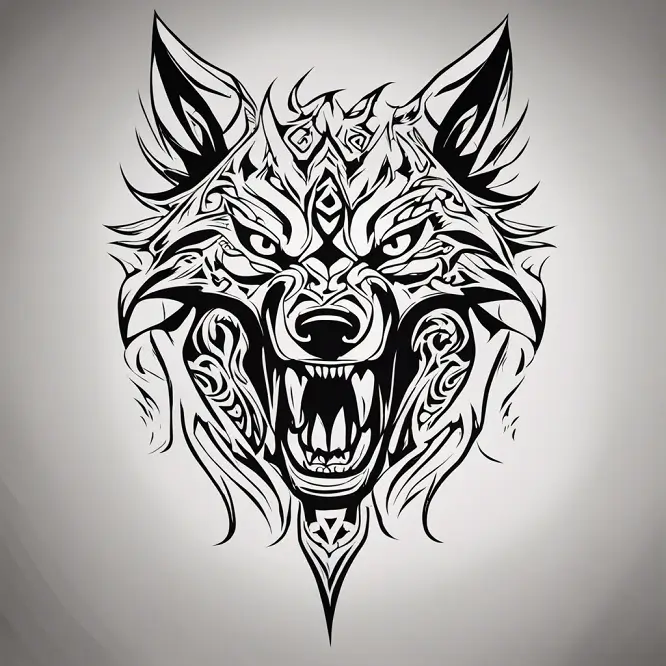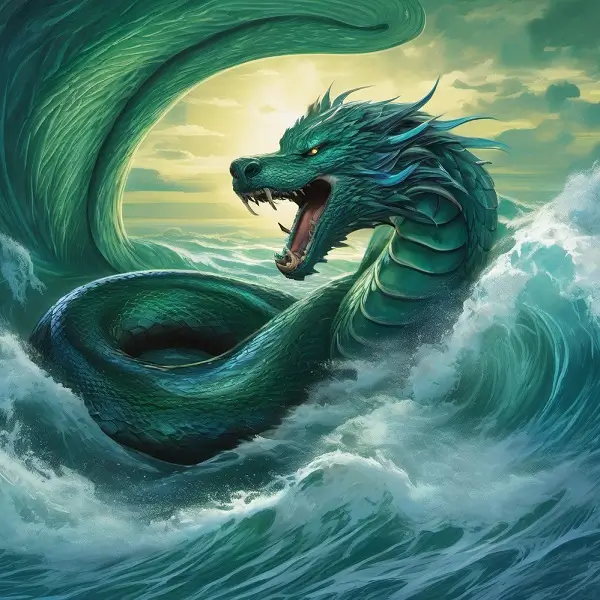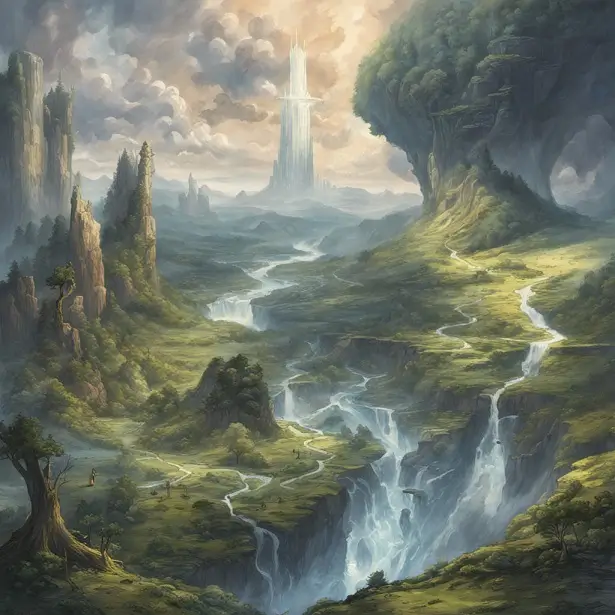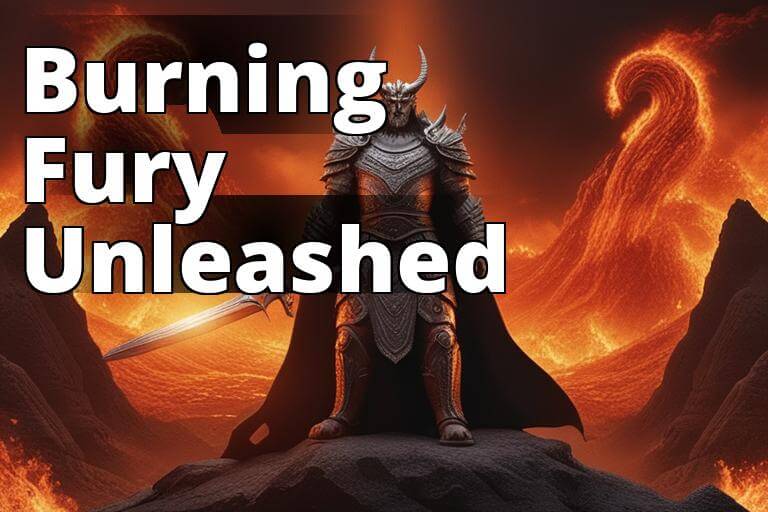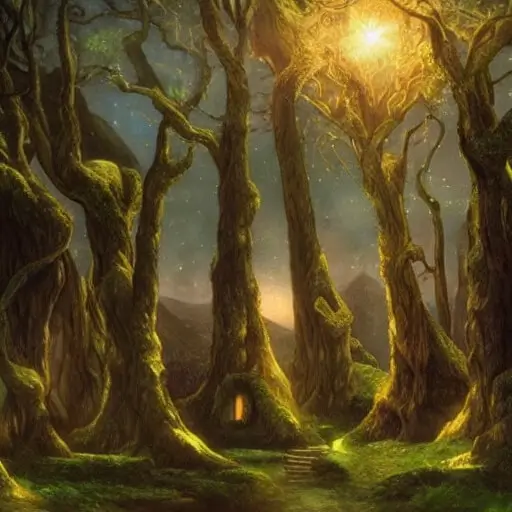In Norse mythology, Thor had several children who embodied his powerful attributes as the god of thunder. His most famous offspring were Magni and Modi, two divine brothers who represented the god’s strength and fury.
Despite their lineage and prophesied role after Ragnarok, Magni and Modi remain obscure figures who appear only briefly in the existing mythological texts.
Their limited presence in the Eddas, however, has not prevented them from appearing in modern pop culture, most notably as antagonists in the God of War video game franchise.
Who Are Magni and Modi?
Magni and Modi are two gods from the Norse pantheon. As the sons of Thor, they belonged to the Æsir tribe of deities. The brothers were either half-siblings or full-siblings, depending on conflicting reports of their parentage. Nevertheless, their father was always the renowned Thor, god of thunder and lightning.
Magni embodied the physical might of Thor while Modi personified his father’s furious temperament. Along with Thor’s daughter Thrúd, whose name meant “strength,” Magni and Modi represented the facets of their father’s divine nature.
Their Position in the Norse Pantheon
Despite their lineage and connections to Thor, Magni and Modi occupy an uncertain position in Norse mythology. They appear more as mythical figures attached to Thor rather than major gods who commanded their own worship and legends. Still, the two brothers were destined to fulfill an important role after Ragnarok as survivors who would possess Thor’s legendary hammer Mjölnir.
According to the Poetic Edda poem Vafþrúðnismál, Magni and Modi were prophesized to inherit Mjölnir after the cataclysmic events of Ragnarok. With their father’s weapon in hand, the brothers would lead the remaining gods and survivors into a new era of peace and prosperity. Thus, Magni and Modi were supposed to pave the way for renewal after the widespread death and destruction of Ragnarok.
Mightiest of the Æsir
In Norse legend, the Æsir and Vanir tribes of gods were often in conflict with each other. Magni established himself as the strongest of the Æsir gods during one such clash between the two divine races.
When Thor battled the Vanir goddess Nerthus, his three-year-old son Magni intervened and defeated Nerthus singlehandedly. This incredible deed cemented Magni’s reputation as the mightiest of the Æsir, possessing strength that exceeded his peers and even rivaled his mighty father.
Etymology of Their Names
The old Norse name Magni derives from the word “magn,” meaning “might” or “power.” His name can thus be taken to signify his role as the embodiment of strength.
Modi, on the other hand, has namesakes meaning “anger” or “ardor.” His name evokes the furious spirit and temperament of battle that he personified.
Magni: God of Strength
Magni’s Family
Magni’s parentage is clearer than his obscure brother Modi thanks to references in several notable poetic works. Kennings found in the Poetic Edda confirm Thor as Magni’s father, referring to the God of Thunder as “Magni’s father” and “Magni’s sire.”
However, Magni’s mother is a source of greater uncertainty. Most scholars agree his mother was the giantess Járnsaxa, whose name means “iron dagger.” As a giantess, Járnsaxa would have been Thor’s consort but not his wife, as he was already married to the goddess Sif.
Other interpretations argue Sif and Járnsaxa were alternate names for the same goddess. But because Járnsaxa is identified as a giantess in the source material, she was likely a separate figure from Sif.
Modi: God of Courage
Modi’s Family
Modi’s parentage is far less certain than his brother’s lineage. While poems confirm they share the same father in Thor, the identity of Modi’s mother remains a mystery.
Some speculate his mother was the giantess Járnsaxa, which would make Modi Magni’s full brother. Others propose Modi was born to Thor’s wife Sif instead, making him Magni’s half-brother and a full sibling of Thor’s daughter Thrúd. With sparse information to go on, the details of Modi’s maternal heritage ultimately remain inconclusive.
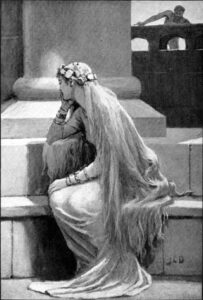
Sif
Magni and Modi: Heirs to Mjölnir
According to Norse legend, both Magni and Modi possessed the ability to wield Mjölnir, the fearsome hammer that was Thor’s signature weapon. Their mastery of Mjölnir established the brothers as Thor’s heirs, which would prove crucial for their destiny following the earth-shattering calamity of Ragnarok.
The giant Vafþrúðnir foretold that Magni and Modi would survive Ragnarok and inherit Mjölnir from their deceased father. With the power of Mjölnir at their command, the brothers were fated to lead the remaining gods and humanity into a bright new era rising from the ashes of the old, fallen world.
Magni and Modi in Norse Myths
While rarely appearing in prominent roles in the Eddas and sagas, Magni and Modi are featured in a few notable stories:
Poetic Edda
In the Poetic Edda poem Vafþrúðnismál, the wise god Odin engages in a game of knowledge against the giant Vafþrúðnir. When Vafþrúðnir fails to answer Odin’s final question, he acknowledges Odin’s wisdom and forfeits the contest. Vafþrúðnir also admits that Magni and Modi are fated to possess Mjölnir and survive after Ragnarok.
“Víðarr ok Váli byggja vé goða,
þá er sloknar Surta logi,
Móði ok Magni skulu Mjöllni hafa
Vingnis at vígþroti.”
In the gods’ home Vithar | and Vali shall dwell,
When the fires of Surt have sunk;
Modi and Magni | shall Mjollnir have
When Vingnir falls in fight.”
Prose Edda
The Prose Edda contains the most significant myth featuring Magni and Modi together. In the tale, the giant Hrungnir drunkenly wanders into Asgard and declares his horse to be superior to Odin’s steed Sleipnir. During the subsequent race, Sleipnir easily outruns Hrungnir’s horse.
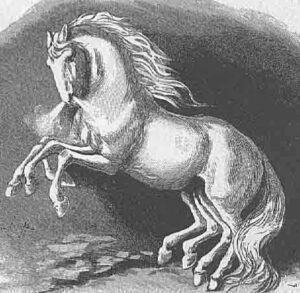
Odin’s steed Sleipnir
Enraged by his loss, Hrungnir challenges Thor to combat. After a fierce battle, Thor slays Hrungnir but becomes trapped under the giant’s collapsed body. The gods struggle unsuccessfully to free Thor until Magni, only three days old, arrives and lifts Hrungnir’s massive leg off his father.
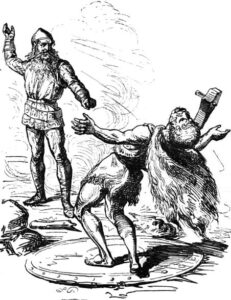
Thor slays Hrungnir, illustration by Ludwig Pietsch (1865)
Modi is also present, fighting against Hrungnir’s own monstrous child during the giant’s confrontation with Thor. But only Magni earns acclaim for freeing Thor, who rewards his son with Hrungnir’s magical steed.
Magni and Modi: Brotherly Bond
Relationship and interactions between Magni and Modi in Norse mythology
Their interactions in Norse mythology highlight their bond as brothers. In one particular story, when Thor falls during a battle against the giant serpent Jormungandr, it is Magni and Modi who step forward to lift the weight of Mjolnir, Thor’s famous hammer. Their combined strength allows them to keep the serpent at bay until help arrives.
This example showcases the loyalty and support they have for each other. As brothers, they stand united and willing to go to great lengths to protect their family and preserve their father’s legacy. Their actions demonstrate the importance of brotherhood and the power it holds, even in the face of adversity.
Besides their role in battle, Magni and Modi also have symbolic meanings within Norse mythology. Magni represents the strength and power that is passed down from one generation to another. He embodies the might of the gods and serves as a reminder of their capabilities.
Modi, on the other hand, symbolizes the determination and courage needed to overcome challenges. Together, they embody the values that the Norse gods hold dear.
Their significance goes beyond their individual traits. As sons of Thor, they are seen as potential successors to their father’s legacy. In Norse mythology, the world is cyclical, and the gods’ powers are passed down to the next generation. Magni and Modi represent the continuation of Thor’s might and influence in the future.
It is not uncommon for brothers to have their own distinct personalities and strengths, and Magni and Modi are no exception. They showcase the diversity within brotherhood and how different qualities can complement and strengthen each other. Norse mythology recognized the unique bond between siblings and placed great importance on familial connections.
Magni and Modi’s relationship in Norse mythology is a testament to the power of brotherhood and the interplay of different strengths and personalities.
They demonstrate the importance of unity and loyalty within a family and symbolize the continuation of their father’s legacy. These brothers remind us of the strength that can be found in the bonds of brotherhood and the potential for greatness that lies within each individual.
Magni and Modi in Pop Culture
Today, Magni and Modi are best known for their appearances as antagonists in the God of War video game franchise. While the games take liberties with Norse lore, they have served to bring renewed attention to these obscure Norse gods.
God of War
In the series, Magni and Modi are portrayed as Thor’s favored sons who ally with their uncle Baldur in his vengeance quest against Kratos. Magni is stronger and more confident than Modi, causing a rivalry between the two half-brothers. This dynamic has no basis in existing mythology but adds an extra layer of drama for modern audiences.
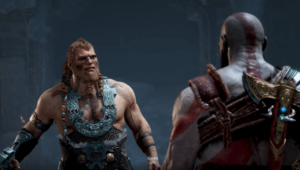
Kratos ends up battling the brothers and kills Magni first. Modi challenges Kratos to avenge his brother but he is ultimately slain by Kratos’ son Atreus. Having the brothers killed contradicts the Norse prophecy about their fate, but creatively adapts them into fitting video game antagonists for players to defeat.
While taking liberties with the source material, the games expose Magni and Modi to a wider audience than Norse myth alone. The God of War franchise has sparked renewed interest in these obscure Norse gods who would likely remain even more mysterious without their video game incarnations.
Magni and Modi emerge from Norse legend as supporting gods intricately linked to their father Thor’s legacy. Their limited appearances speak more to the paucity of surviving myths rather than any intended insignificance.
Modern pop culture has helped illuminate these lesser-known figures for today’s audiences, even if fictionalized for entertainment value. As gods embodying Thor’s might and temper, Magni and Modi complete the image of their renowned father and represent the multifaceted nature of the God of Thunder.
Magni and Modi FAQs
Why are Magni and Modi not better known?
As supporting gods to Thor, Magni and Modi likely did not gain more prominence because the myths focused on their father’s exploits over theirs. Also, much of Norse mythology has been lost, leaving minimal information about more minor figures.
What is Magni the god of?
Magni is considered the god of strength and physical prowess. As the strongest of the Æsir gods, he exemplifies these qualities passed down from his father Thor.
What is Modi the god of?
Modi is considered the god of fury, courage, and battle rage. He represents the fierce energy and spirit of combat.
Did Magni and Modi have magical abilities?
No specific magical abilities are attributed to Magni and Modi in the existing myths. As gods, they likely had some powers, but these were not recorded or have been lost.
What weapons did Magni and Modi use?
The only weapon definitively associated with Magni and Modi is Mjölnir, the hammer of Thor, which they were prophesied to inherit after Ragnarok. Their other armaments are unknown.
Did Magni and Modi have any special symbols or animals associated with them?
There are no unique symbols, animals, or affiliations recorded for Magni and Modi. As sons of Thor, lightning and thunder could be considered loose affiliations.
Did Magni and Modi have any other siblings?
No other siblings beyond their half-sister Thrúd are mentioned in the surviving Norse myths. But other lost legends may have recorded additional brothers, sisters, or half-siblings not currently known.
Let me know if you need any clarification or have additional questions to add!
Conclusion
Though seldom appearing in Norse mythology compared to their illustrious father, Magni and Modi complete the image of Thor through their embodiment of his key attributes.
Magni represents the mighty strength of the Thunder God while Modi personifies his fierce temperament. Together, the brothers symbolize the multi-faceted nature of their divine father.
Their obscurity pales in comparison to their monumental destiny – to inherit Thor’s power after Ragnorok and restore order to the new world. While largely forgotten players in the Norse pantheon today, Magni and Modi were destined to wield Mjolnir and usher in a peaceful era from the ashes of apocalyptic destruction.
Their mythic journey resonates through their surprising resurgence in modern pop culture, reintroducing Thor’s sons to today’s audiences.
As supporting gods and heirs to Thor’s legacy, Magni and Modi play a critical role that belies their limited appearances in the Eddas and sagas.
Shop Norse Jewelry
Are passionate about Norse Mythology?
Finding the ideal piece of Jewelry can be challenging and time-consuming, especially if you lack inspiration or don’t know where to look.
Surflegacy, has you covered. We have a wide range of Handmade Jewelry in various styles, shapes, colors, and materials, to accentuate your Norse spirit and look. Do not hesitate to visit our selection HERE
Whatever you wear, you’ll find the ideal trendy piece to complement your wardrobe. Our jewelry is designed to be worn every day, no matter where you go or what season is. Are you ready to step up your wardrobe game?



